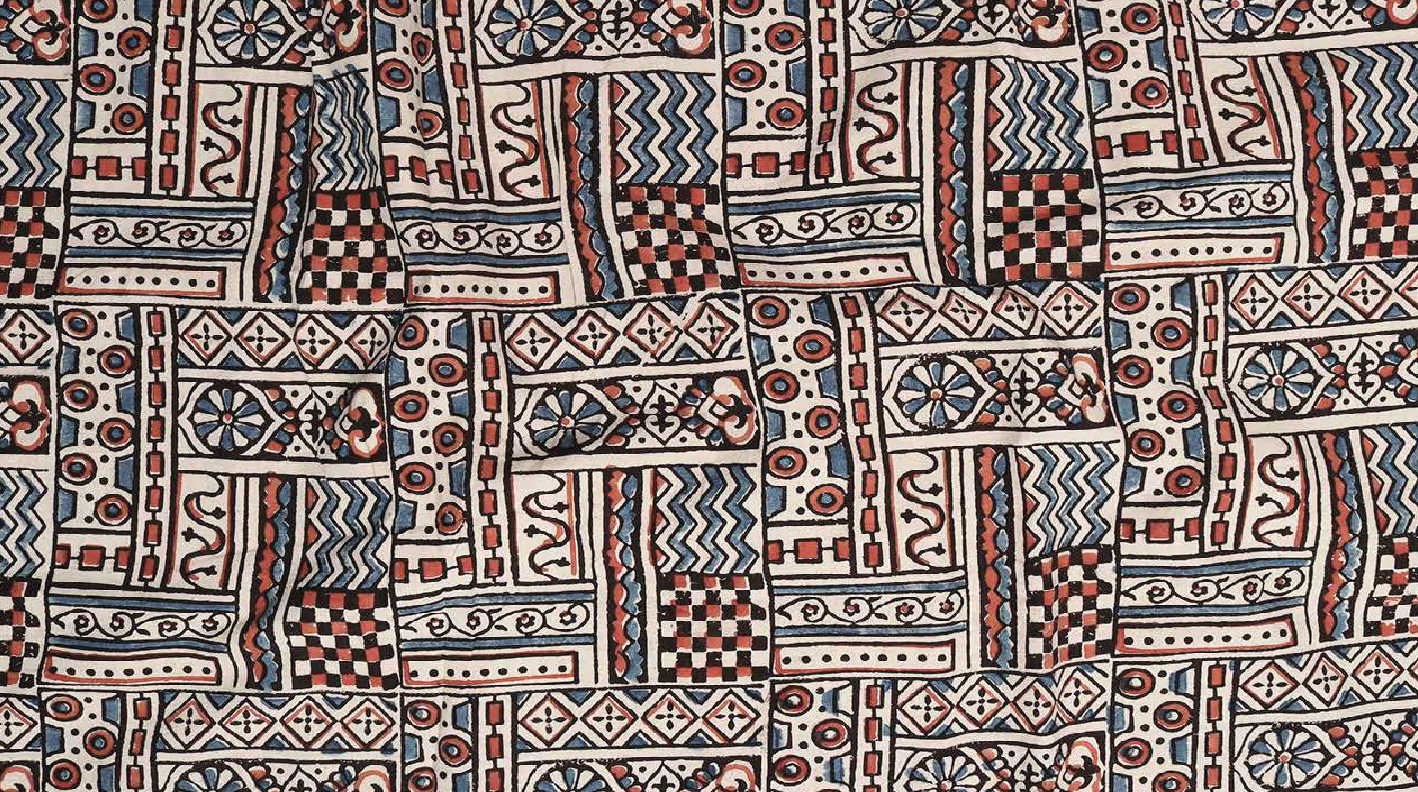Ajrakh block printing has its origins in the Indus Valley Civilization. Tracing its history tells us a lot about its evolution to date.
Ajrakh, meaning blue in Arabic, is said to signify the universe which is believed to be an interplay of vibrant hues of the color palette: color red for the earth, black for darkness, white for clouds and blue for the universe itself.
Think of the moonless night sky, think of midnight, think of the absolute blackness of the dark, and think of the night sky…the star-spangled sky against a stark blue-black background. Does your mind conjure images of a night sky dotted with magical patterns? This is the magic of ajrakh.
Deriving its name from the word ‘azrak’, Ajrakh printing is believed to draw its origins from the Indus Valley Civilization. We can trace its rich history to more than 4000 years ago. This block-printed textile art is resist-dyed using natural dyes like indigo and madder. Ajrakh is made by the Khatri community in the Kutch region of Gujarat and in the Barmer district of Rajasthan. It is a heady mix of intricate geometric patterns against deep hued textiles. Its long legacy involves 14-16 stages of dyeing and printing, which can take up to 21 days to complete. More than a fabric, it is a tradition belonging to the Sindhi community.
Traditionally, vegetable dyes were used by ajrakh printers. But soon, they began to use synthetic dyes, realizing that vegetable dyes were proving to be too expensive. With the revival of the craft and adoption of more sustainable practices across the industry, ajrakh printers have reverted to the usage of natural dyes. There is also a move to incorporate new motifs to the design library, moving away from the standard geometric prints and colors.
Despite its history, Ajrakh has evolved with time. Wooden blocks that are used by the artists are made in their homes today with the help of machine-like drills. Further, instead of using the depleting natural water resources, modern artists use water drawn from borewells. Changing times have also called for critical changes in terms of utility and design. However, the beauty of this traditional art withstands the test of time.

